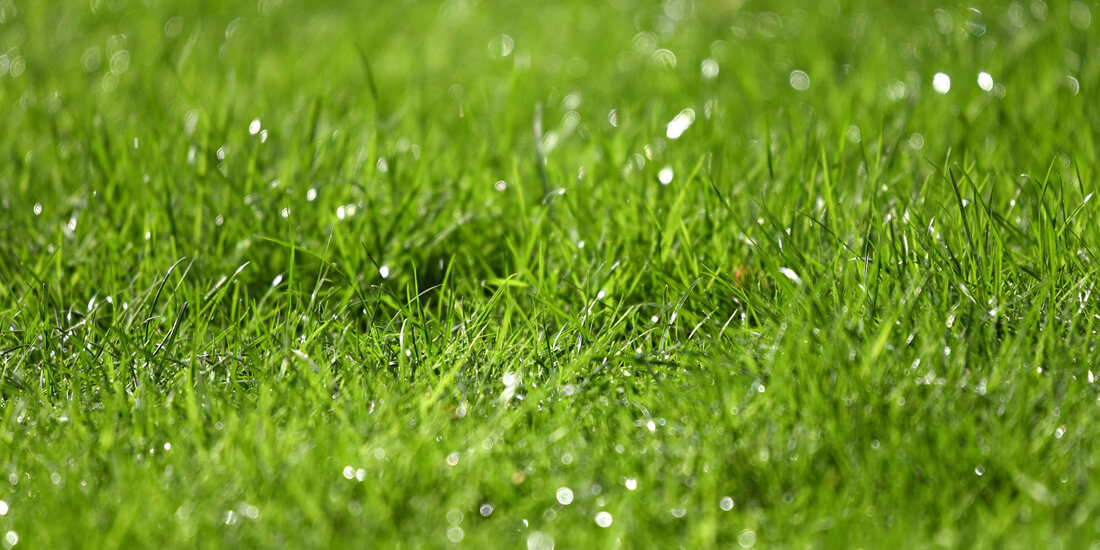Winter Fertiliser Guide

At The Grass People, we recommend feeding your lawn at least twice yearly, once during the spring and again during autumn. An autumn/winter feed using a winter fertiliser will perk your grass up after a busy summer and protect the grass during harsh winter weather conditions.
When should I use winter fertilisers?
When to feed your lawn with fertiliser depends on the weather in your part of the UK. Fertilising may end much earlier in Canterbury than it would in Edinburgh. As a general rule of thumb, the fertilising season is sometime between the beginning of the wetter weather in September and before the winter frost in November. This is where a winter lawn fertiliser comes into play to protect your grass during the UK winter’s cold and wet weather.
Understanding fertilisers
On the label of any of our fertilisers, there will be three numbers: the N, P and K numbers (NPK). These numbers explain the nitrogen, phosphate and potassium units within the lawn feed - a bit like a balanced smoothie for your grass! With winter fertilisers, phosphate and potassium are at increased levels as these elements will encourage the growth of roots and strengthen the lawn under the soil. We do not want to encourage rapid grass growth during winter, hence the lack of nitrogen.
Winter Fertiliser from The Grass People
Fast Acting Quick Release Liquid Winter Fertiliser
Make it Strong Autumn/Winter Liquid Lawn Fertiliser - This fast-acting liquid lawn food has an NPK of 3.6.6. that feeds your grass quickly to lock in nutrients and strengthen it to block out common winter grass diseases; it helps keep your lawn in top shape during the harsh weather of UK winter!
Quick Release Granular Autumn/Winter Fertiliser
QUICK RELEASE: Autumn/Winter Fertiliser - For root strength over the Winter. NPK 3.12.12. A low nitrogen fertiliser with high phosphate and potassium will strengthen the roots and stiffen the leaf blades to protect the grass plant before the winter. This results in a healthier sward once growth begins the following spring.
Slow Release Granular Autumn/Winter Fertiliser
SLOW RELEASE: Autumn/Winter Fertiliser - has an NPK rating of 8.0.6 and is intended to be applied between August and October. It’s designed to feed all grassed areas just enough to aid late-season growth without causing gluts of lush grass growth that will be susceptible to frosts and disease as the days get shorter. The added iron and magnesium strengthen grass roots and leaves to give protection throughout the Winter, resulting in a healthier sward the following spring.
Preparation is key
We have a detailed guide on how to fertilise your lawn and how to get the best results when using our winter fertiliser.
Watering is vital when using granular fertiliser
After using granular fertiliser, it is important to water off the fertiliser from the grass blades if there is no rainfall. If left dry, the fertiliser will burn and damage the existing grass. Our time-saving tip is to fertilise on a day when you expect a good amount of rain so it does the job for you; otherwise, water it off yourself using a hose/sprinkler system.
We have a video guide on how to use our granular fertiliser below, which outlines the simple steps for feeding your lawn:
Tips for applying liquid fertiliser
When using liquid fertiliser, apply it on cool, dry days when no rainfall is expected. This way, the liquid fertiliser will have time to seep into your lawn and provide your grass with essential nutrients to strengthen it and enhance its health.
For further reading on our fertilisers, you can find helpful tips in the fertiliser area of our Help & Advice section and Fertiliser Frequently Asked Questions.